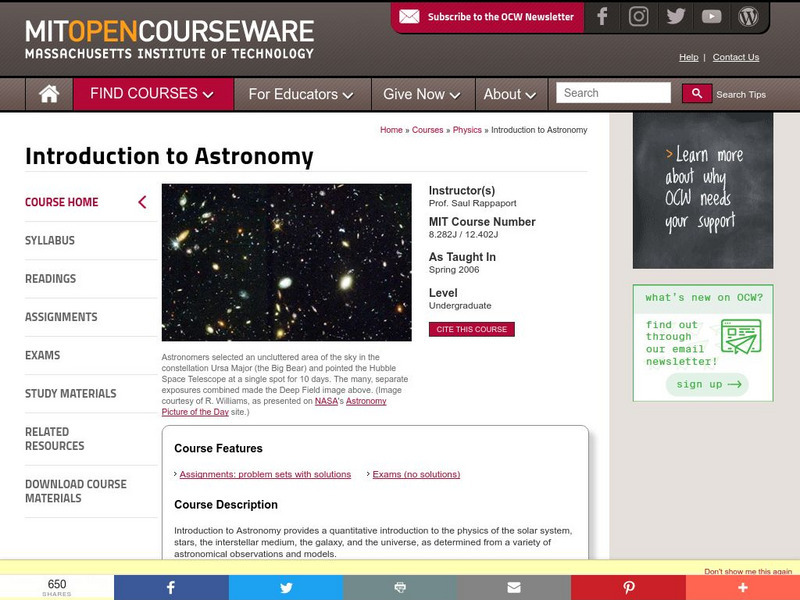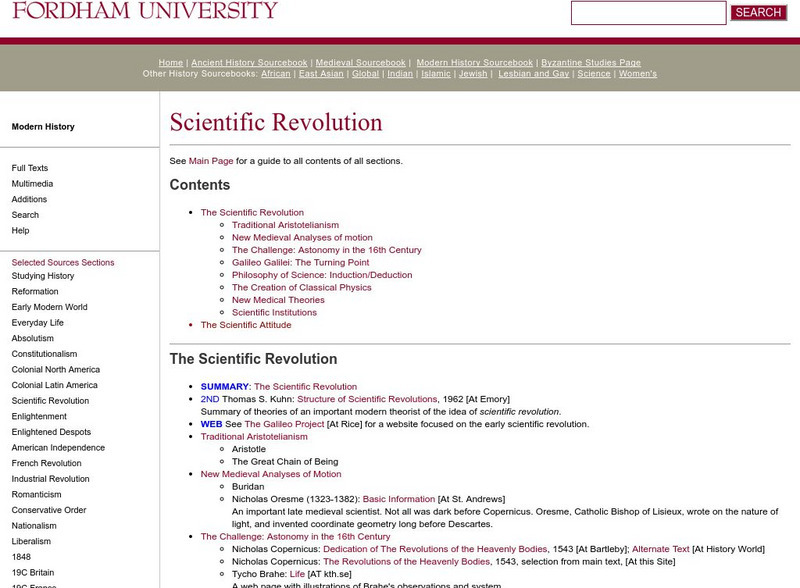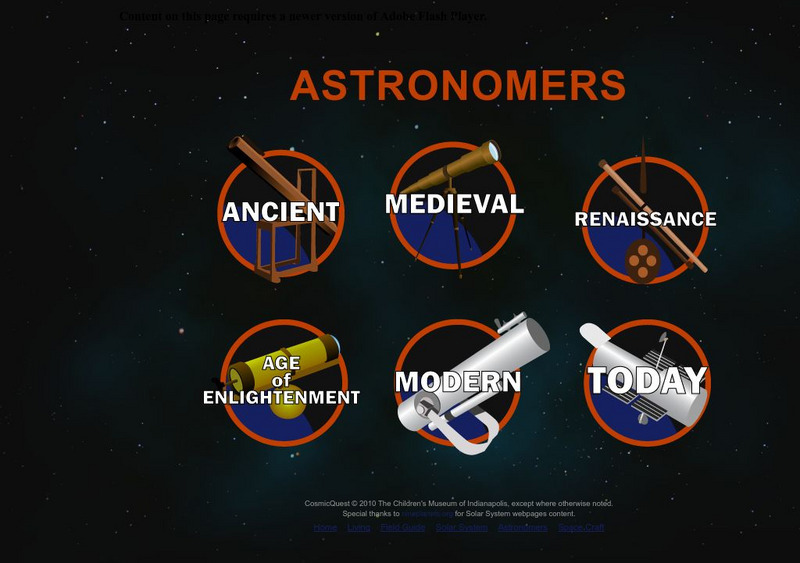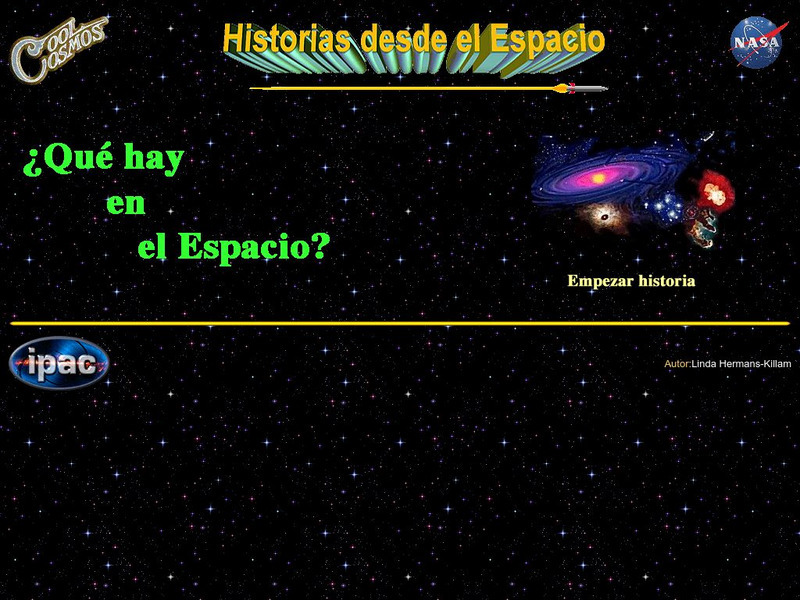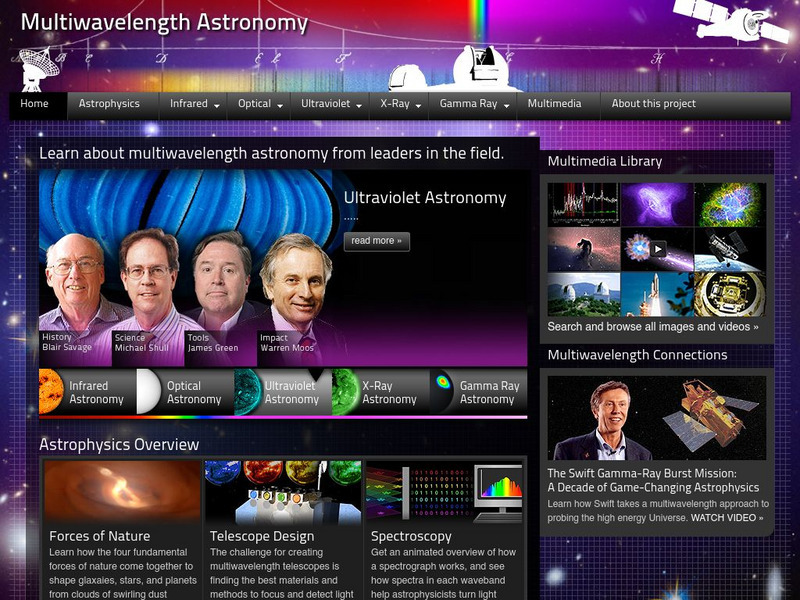Curated OER
Graphs And Ellipses
Students become acquainted with linear graphs, the parabola and the rectangular hyperbola. Also prepare tables of paired values as preparation for plotting a line. They study the cartesian equation of an ellipse, with a worked example.
Curated OER
The Mystery Constellation
Students decipher two teacher chosen mystery constellations a month. They listen to stories, explain what they know about constellations and name the mystery constellation.
Curated OER
Eyes on the Sky, Feet on the Ground
Fifth graders participate in online astronomy activities with hundreds of fun explorations into astronomy as a classroom tool for learning how to theorize, experiment, and analyze data.
California Institute of Technology
Cool Cosmos: Ask an Astronomer
Resource compiles a list of most frequently asked questions about Mercury. Each question is linked to an astronomer's answer. Kids can explore many aspects of this wonderful planet.
California Institute of Technology
Cool Cosmos: Ask an Astronomer: Comets
Resource provides easy to understand information about comets. Click on the frequently asked question link to find out more about these mysterious celestial bodies.
Exploratorium
Exploratorium: A Guide to Astronomy Resources
A portal to resources on the sun, the Earth's neighboring planets, and the weather in space. Find out why Saturn is the "jewel of the Solar System" and explore what happens when Venus and Mercury make their rare transits across the sun.
Massachusetts Institute of Technology
Mit: Open Course Ware: Courses: Physics: Introduction to Astronomy
A university-level introduction to basic astronomy. Includes course readings, assignments, exams, and study notes with links to images and to biographical profiles of famous astronomers.
National Science Foundation
National Science Foundation: Astronomy and Space: Research Overview
Explore some of our most fundamental questions about space exploration with this research overview collected by scientists at the National Science Foundation. Additionally, experience deep space first-hand with telescope interactives.
California Institute of Technology
Ipac at Cal Tech/what Are Supernovae?
Basic characteristics and definition, how astronomers study supernovae, the types of supernovae, where they occur, theories about supernovae, what supernovae tell us about the universe, and the effects of supernovae.
Georgia State University
Georgia State University: Hyper Physics: Supernovae
This site from Georgia State Department Astronomy & Physics provides information on the Supernovae. "A supernova is an explosion of a massive supergiant star." Find out much more at this site.
Harvard University
Harvard Smithsonian Center for Astrophysics: The Constellations
Based on images from the Chandra X-Ray Observatory, this is an excellent glossary of all the constellations, including the ones that make up the Zodiac. Find images, photographs, and an excellent background narratives concerning each...
Internet History Sourcebooks Project
Fordham University: Modern History Sourcebook: Isaac Newton
This site from Fordham University links to excerpts of Newton's major works. Please scroll down to find the section on Newton titled "The Creation of Classical Physics." You will be able to actually read some of Newton's work! Read...
Internet History Sourcebooks Project
Fordham University: Modern History Sourcebook: Letters on Newton
An interesting site from Fordham University that provides letters Voltaire wrote regarding Newton and his work.
Internet History Sourcebooks Project
Fordham University: Modern History Sourcebook: Principles of Natural Philosophy
This site from Fordham University is an exerpt from Newton's famous "Principia."
Children's Museum
Children's Museum of Indianapolis: Cosmic Quest: Astronomers
Explore the achievements of notable astronomers beginning with ancient times through modern space explorers.
PBS
Pbs Learning Media: Above the Clouds: Telescopes on Mauna Kea
This video segment adapted from First Light explains why the highest peak in the Pacific, Mauna Kea, is an ideal site for astronomical observations. Featured are new telescope technologies that allow astronomers to explore the universe...
PBS
Pbs Learning Media: All Planet Sizes
This illustration from the Lunar and Planetary Laboratory shows the approximate sizes of the planets relative to each other. Note that the planets are not shown at appropriate distances from the Sun.
California Institute of Technology
Spitzer Science Center: Historias Desde Espacio: Que Hay en El Espacio?
What's in Space? Take a look at pictures of space while reading a story explaining what you see. An excellent resource for Spanish speakers. Provides authentic pictures and gives students a basic understanding of outer space.
US Department of Labor
Bureau of Labor Statistics: Physicists and Astronomers
Discover the work of physicists and astronomers. This resource includes the job outlook and salary expectations.
University of Chicago
Telescopes at Yerkes Observatory / Virtual Tour
This site describes the difference between reflective and refractive telescopes and includes a virtual tour of Yerkes Observatory which houses the largest refracting telescope in the world.
University of California
Univ. Of Cal Berkeley: The Comet's Tale
Site provides extensive information in the study of comets. Includes excellent graphics that depict what comets look like as they travel through the solar system. Also includes information on how comets may have effected the Earth's...
TED Talks
Ted: Ted Ed: Calculating the Odds of Intelligent Alien Life
This video uses the Drake Equation to calculate the odds of intelligent alien life in the universe. [7:28] Followed by a short quiz and a list of additional resources to explore.
University of Chicago
University of Chicago Library: Multiwavelength Astronomy
Get the inside story on how Astrophysics emerged as a field of study from personal stories of scientists that helped to revolutionize our view of the Universe.
Science Buddies
Science Buddies: Using the Soho to Determine the Rotation of the Sun
This project shows you how to use images from an orbiting observatory to measure how fast the Sun rotates.






